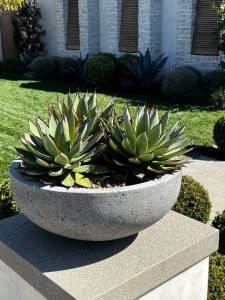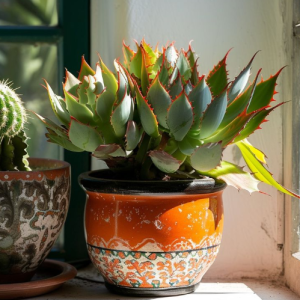- English
- Chinese
- French
- German
- Portuguese
- Spanish
- Russian
- Japanese
- Korean
- Arabic
- Irish
- Greek
- Turkish
- Italian
- Danish
- Romanian
- Indonesian
- Czech
- Afrikaans
- Swedish
- Polish
- Basque
- Catalan
- Esperanto
- Hindi
- Lao
- Albanian
- Amharic
- Armenian
- Azerbaijani
- Belarusian
- Bengali
- Bosnian
- Bulgarian
- Cebuano
- Chichewa
- Corsican
- Croatian
- Dutch
- Estonian
- Filipino
- Finnish
- Frisian
- Galician
- Georgian
- Gujarati
- Haitian
- Hausa
- Hawaiian
- Hebrew
- Hmong
- Hungarian
- Icelandic
- Igbo
- Javanese
- Kannada
- Kazakh
- Khmer
- Kurdish
- Kyrgyz
- Latin
- Latvian
- Lithuanian
- Luxembou..
- Macedonian
- Malagasy
- Malay
- Malayalam
- Maltese
- Maori
- Marathi
- Mongolian
- Burmese
- Nepali
- Norwegian
- Pashto
- Persian
- Punjabi
- Serbian
- Sesotho
- Sinhala
- Slovak
- Slovenian
- Somali
- Samoan
- Scots Gaelic
- Shona
- Sindhi
- Sundanese
- Swahili
- Tajik
- Tamil
- Telugu
- Thai
- Ukrainian
- Urdu
- Uzbek
- Vietnamese
- Welsh
- Xhosa
- Yiddish
- Yoruba
- Zulu
- Kinyarwanda
- Tatar
- Oriya
- Turkmen
- Uyghur

To be effectively grown, the blue agave—also known as blue agave—requires not only a temperature and soil conditions fit for its development but also other environmental factors like water supplies and altitude. By knowing the suitable growing conditions for the plant, one can maximise the development of blue agave and also help to guarantee its quality and output. This paper will give a thorough investigation of the blue agave growing surroundings. Among the many factors this study will cover are climatic conditions, soil type, precipitation, altitude, and more.

Blue Agave
Climate conditions
It is native to Mexico’s highlands, which have a climate marked by high temperatures, little humidity, and notable day to night temperature variations. Blue agave may be cultivated in a healthy way and acquire the best potential quality within the temperature range of 21 degrees Celsius to 30 degrees Celsius (70 degrees Fahrenheit to 85 degrees Fahrenheit).
Although very low temperatures might still kill the plant, temperatures during the winter have less of an impact on blue agave. The blue agave has a great sensitivity to frost, hence prolonged frost conditions might cause the plant to be permanently damaged or even dead. Therefore, growing blue agave calls for the employment of preventive actions, including mulch or the choice of varieties more fit for low-temperature conditions.
Blue agave needs adequate sunlight to support its growth and sugar accumulation even if it may flourish in sunny areas. The optimal situation for light conditions is daily minimum six hours of direct sunlight. Situations that are gloomy or shaded will slow down its development, therefore reducing the quality and quantity of blue agave.
kind of soil
Regarding the appropriate growth of blue agave, soil is among the factors most important. This specific plant grows well on reasonably draining soil. Sandy soil or gravel soil is the ideal kind of soil as it has a high water permeability and may prevent water from accumulating in the roots, therefore lowering the possibility of root rot developing.
Generally speaking, the pH of the soil should lie somewhere between 6.0 and 7.0. Though it is usually regarded as the most ideal, blue agave is not exact about the pH value—that of acidity and alkalinity—of the soil. The capacity of the soil to absorb nutrients will be affected by its too acidic or alkaline nature, thereby influencing the growth of the plant as well as the sugar accumulation level. Before planting, it is important to do soil testing and make any necessary pH changes to ensure the blue agave develops well.
The raindrop
Blue agave is a plant that can thrive in dry settings, however this does not mean it requires absolutely none of any water. Between 400 and 800 millimetres is the ideal range for annual precipitation; however, its ecosystem usually suffers less precipitation than in other surroundings. While a moderate level of precipitation during the rainy season might be helpful for plant growth, too much precipitation could cause water collecting at the roots, therefore compromising the health of the plant.
Strong root structure and thick leaves help it to save water all during the dry season. To ensure the plant will have enough water all during the dry season, growers can use drip irrigation systems or other water-saving irrigation methods. These methods may prevent the problem of soil water accumulation brought on by too much irrigation while nevertheless providing the necessary quantity of water during the dry season.
Altitude height
Usually growing between 1,500 and 2,500 meters in height, the is found in plateau areas. The environmental conditions in this specific height range are ideal for blue agave growth; differences in altitude will also affect the taste and quality of the resultant product. The notable temperature variation between day and night in high-altitude areas helps to raise the concentration of sugar within the plant, therefore improving the quality of the tequila.
Furthermore affecting the plant’s rate of development is its elevation. Although the growth cycle is frequently lengthier at higher altitudes, this offers a chance to get more taste molecules. To ensure that blue agave can attain its ideal growth condition in a given location, growers are obliged to change the planting management strategy in line with the altitude.
The effect the growth surroundings have on blue agave quality
Apart from the fact that it affects the growth speed and yield of the plant, the growing environment of blue agave clearly relates with its quality and taste. Several elements—including climate, soil, precipitation, and altitude—together help to develop the sugar accumulation and taste characteristics of blue agave. To produce tequila of the best quality, the blue agave plant has to be cultivated under an ideal growth conditions. This will ensure the plant has best brewing qualities.
Helps to better hold sugar in areas that are both warm and dry, therefore increasing the alcohol level and tequila’s taste. Furthermore crucial are sufficient precipitation and favourable soil conditions, which help plants to grow healthily and also help to lower the frequency of illnesses and pests, thus improving the quality of raw materials.

Agave
The quality and productivity of blue agave are clearly correlated with its growing surroundings. The optimum environment conditions include a warm, dry climate with plenty of sunshine; the kind of soil should be well-drained sandy soil or gravel soil; the quantity of precipitation should be appropriate; and the altitude has an influence on the flavour of the plant as well as its growth cycle. Not only would knowing and maximising these environmental factors help blue agave to be better, but it would also help tequila’s production’s efficiency. Farmers and winemakers must use scientific management and control of these environmental factors if they are to ensure the successful development of blue agave and the manufacturing of premium wine.



